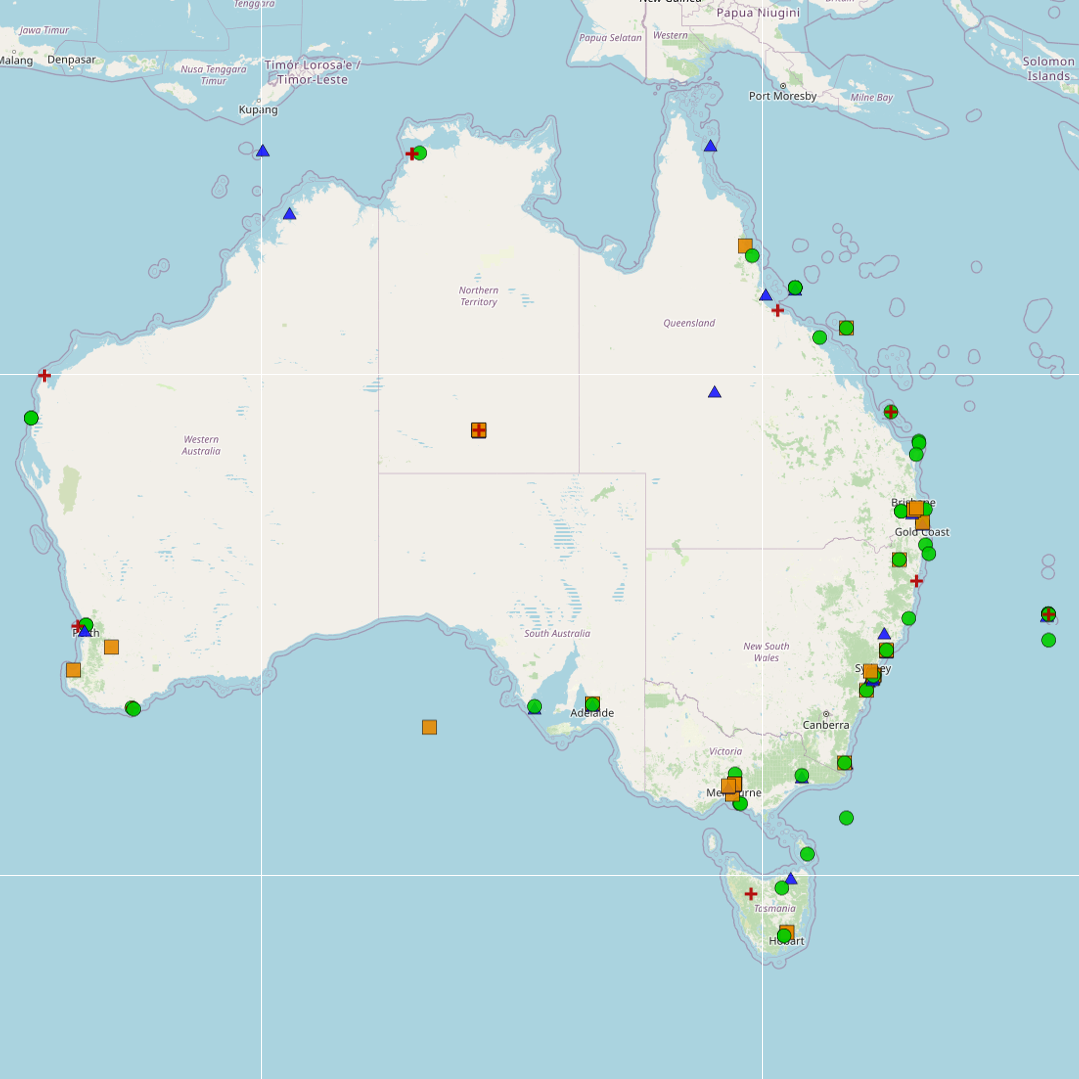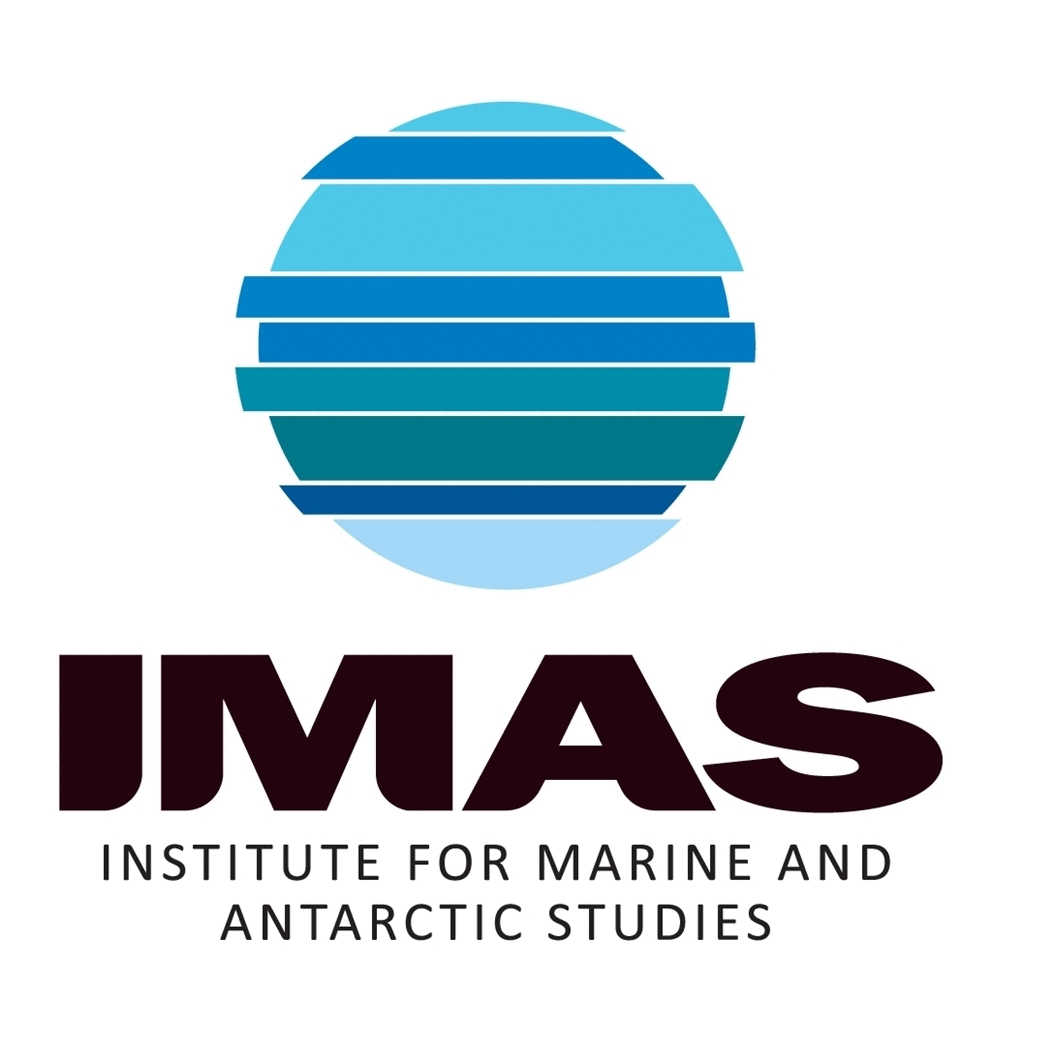National Environmental Science Program (NESP) Marine and Coastal Hub
Type of resources
Topics
Keywords
Contact for the resource
Provided by
Years
-

This metadata record provides a brief overview of the National Environmental Science Program (NESP) Marine and Coastal (MaC) Hub. The record acts as an aggregation point for all NESP Marine and Coastal Hub data collections and projects developed as part of this research program. The National Environmental Science Program (NESP) is a long-term commitment by the Australian Government to environment and climate research. The first phase invested $145 million (2014-15 to 2020-21) into 6 research hubs. The second phase invests $149 million (2020-21 to 2026-27) into 4 new research hubs. The program builds on its predecessors – the National Environmental Research Program (NERP) and the Australian Climate Change Science Programme (ACCSP) – to support decision-makers to understand, manage and conserve Australia’s environment by funding world-class biodiversity and climate science. The Marine and Coastal Hub is a collaborative partnership supported by funding from the Australian Government administered by the Department of Agriculture, Water and the Environment. The current NESP funding program runs from 2021 to 2027. The Marine and Coastal Hub is co-administered by the University of Tasmania (UTAS), and the Reef and Rainforest Research Centre (RRRC). The Marine and Coastal Hub will deliver: • applied research to support management of Australia’s marine and coastal environments including estuaries, coast, reefs, shelf and deep-water • targeted biodiversity and taxonomy products to support efficient system monitoring • environmental monitoring systems and decision-support tools. The hub will also drive coordinated research across all 4 new hubs under NESP’s ‘protected place management’ cross-cutting mission. This research will support management of Australia’s protected places and heritage, including the national park estate and Ramsar sites in both marine and terrestrial environments. Research products from the NESP Marine and Coastal Hub are available from https://nespmarinecoastal.edu.au and the Australian Ocean Data Network catalogue (http://catalogue.aodn.org.au)
-

A review of peer-reviewed publications was undertaken, focusing on coastal and marine microplastics relevant to South Eastern Australia (South Australia, Victoria, and New South Wales), as well as from ongoing citizen science programmes from AUSMAP. This dataset summarises basic information about the microplastics studies: the location of the study; if the study focused on water, sediment or biota; the type of biota (for biotic studies); and the DOI of the publication. Although the primary focus of this study was restricted to southeastern Australia, studies collated from other regions have also been included in this dataset. The outcomes of the literature review for other regions (QLD, NT, SA, WA, Tas) should not be considered comprehensive.
-

This record provides an overview of the NESP Marine and Coastal Hub scoping study - "Identify knowledge gaps and solutions for extent mapping of Australian marine and coastal wetlands". No data outputs were created by this project. -------------------- Marine and coastal wetlands provide extensive ecosystem services to Australia, and a comprehensive inventory is required for effective conservation and protection. This project will identify key knowledge and inventory gaps and determine solutions to progress a consolidated inventory within the context of a wider review of national mapping capacity for wetlands. Gaps and solutions will be identified through targeted surveys and workshops with end-users and researchers following a review of relevant data and literature. A summary of the status of mapping habitat attributes and services such as blue carbon, coastal protection and shorebird habitat will be produced. The outcome will be identified prioritisation for future investment to fill knowledge gaps. Outputs • Report reviewing and synthesising knowledge gaps in inventory mapping of marine and coastal wetlands, identifying effective solutions, and guiding subsequent research projects for enhancing wetland mapping [written] ---No data outputs were created by this project.---
-

This record provides an overview of the NESP Marine and Coastal Hub Research Plan 2023 project 3.7 – Identifying and overcoming barriers to coastal and marine habitat restoration and Nature based Solutions in Australia. No data outputs are planned for this project. -------------------- There is an increasing need for and investment in coastal and marine restoration around Australia to help manage habitat and biodiversity loss, water quality, coastal inundation and erosion, and blue carbon assets. These projects are undertaken by a range of Commonwealth, state and local government agencies, NGOs, and community groups, and range across different habitat types and scale. However, a number of barriers currently preclude widespread uptake and implementation of habitat restoration and nature-based solutions (NbS) in Australia, which centre on: 1) policy and legislative barriers; 2) engineering adoption of NbS; and 3) Aboriginal and Torres Strait Islander inclusion and co-design. Overcoming barriers to marine and coastal restoration, and Nature-based Solutions (NbS) adoption is critical to safeguarding Australia’s marine estate. We focus this research on three thematic areas that represent roadblocks and opportunities for more inclusion in implementing and scaling-up restoration and NbS: 1. Engaging policy & permitting regulators to identify and breakdown barriers for marine and coastal habitat restoration; 2. Understanding and up-take of NbS by the engineering sector; and 3. Inclusion of Aboriginal and Torres Strait Islanders in restoration and NbS The research will be conducted through in person and/or virtual workshops, with the outcome being advancement of effective approaches to overcome these challenges. Planned Outputs • Final technical report with analysed data and a short summary of recommendations for policy makers of key findings [written]
-

This record provides an overview of the NESP Marine and Coastal Hub project "Advancing national standards and best practices to monitor key marine values and pressures". No data outputs are expected to be generated by this project. -------------------- This project aims to advance the establishment and use of national standards and best practices to monitor the condition status of priority values and pressures of Australia’s marine estate. It will build on the national standards and best practice process developed in the previous NESP Marine Biodiversity Hub to produce three new national standards for monitoring (drop cameras, socioeconomic surveys of marine users, marine microplastics). A practical implementation plan will be developed to embed the application of standards, with particular attention to inclusive and diverse approaches (e.g. engagement of community groups and Indigenous partnerships). The plan will set out a future path to develop, maintain and make available national standards; increase their uptake; and assess effectiveness and impact as related to the delivery of priority monitoring activities. Outputs • Workshop and questionnaire report gauging the needs of scientists, Indigenous communities, and marine managers [written] • Scientific publication on marine best practice development [written] • New national standards for (1) drop cameras; (2) socioeconomic surveys; and (3) microplastics studies [written] • Implementation plan (final report) [written] ---no data outputs will be generated by this project---
-

This record provides an overview of the NESP Marine and Coastal Hub small-scale study - "A national framework for improving seagrass restoration". For specific data outputs from this project, please see child records associated with this metadata. -------------------- Across Australia, the loss of >275,000 ha of seagrass meadows and associated ecosystem services – valued at AU$ 5.3 billion – has contributed to the long-term degradation of estuarine and coastal marine ecosystems. Restoration of seagrass is critical for improving the health and function of these ecosystems and sustaining coastal communities and industries that depend on them. This is primarily because restoration practices are piecemeal and driven by local drivers and are generally not conducted at scales of seagrass loss. We address this problem by bringing together scientists and key stakeholders to collate knowledge on seagrass ecology and restoration and generate a framework to scaling-up restoration nationally. We also build on ongoing restoration trials to test the proposed framework.These are: assessing sediment quality and manipulations (Gamay Rangers, UNSW); use of sediment filled hessian tubes for seed and seedling capture (Malgana Rangers, UWA), and: scaling up seed collection for seed-based restoration (Seeds for Snapper, OZFISH, UWA). Planned Outputs • Effect of sediment quality and manipulation on seagrass transplant success (field data) • Locations and health of beachcast fragments of Posidonia in Botany Bay (field data) • Effect of engineering hydrodynamics (by use of hessian socks) on seagrass transplant success (field data)
-
Tidal wetlands are vulnerable to accelerated rates of sea-level rise projected by climate models. The Surface Elevation Table (SET) is a technique applied globally to assess the extent of vertical adjustment of tidal wetlands to sea-level rise over decadal timescales. This record describes the SET data from the Australian network (OzSET). This data can be used for analyzing wetlands elevation change at the study sites
-

This record provides an overview of the NESP Marine and Coastal Hub scoping study - "Research needs for assessment and monitoring of nutrients, chemicals and antimicrobials in the marine environment". No data outputs were generated by this project. -------------------- Water quality can be impacted by a large suite of chemical and microbiological contaminants introduced from a variety of sources. There are a number of emerging contaminants and broad ranges of point sources, including a variety of chemical (e.g. heavy metals, pharmaceuticals, pesticides, nutrients) and microbiological (e.g. pathogens, antibiotic resistant microbes) contaminants that are discharged in sewage, stormwater, estuarine flows and industrial wastes. This project will involve a desktop scoping study to collate relevant datasets and current water quality monitoring goals and activities; engage with key stakeholders through workshops, interviews, and surveys to further define priorities; and conduct a risk assessment to assess impacts to marine and coastal water quality. This project will deliver a clear framework for highlighting knowledge gaps, future research directions and water quality management priorities. Outputs • Final technical report with analysed data, including survey outcomes and a short summary of recommendations for policy makers of key findings [written] ---no data outputs were generated by this project---
-
Benthic habitat annotations of stereo Baited Remote Underwater Video (Stereo-BRUV) and panoramic drop camera imagery, were completed as part of a report funded by the NESP Marine & Coastal Hub. This report focussed on an IUCN II zone in the South-west Corner Marine Park off the 'Capes region' near Margaret River. These data were analysed in TransectMeasure using a modified version of the CATAMI scheme.
-

This record provides an overview of the NESP Marine and Coastal Hub project "Ecological outcomes of wastewater discharges in contrasting receiving environments". For specific data outputs from this project, please see child records associated with this metadata. -------------------- Australia’s Waste Policy Action Plan, Threat Abatement Plan for the impacts of marine debris and Australia’s One Health Master Action Plan all refer to the need for emerging pollutants to be incorporated into contaminant guidelines. Wastewater treatment plants currently report on a limited number of contaminants and lack consistent testing requirements. NESP MaC Scoping Study 1.16 has determined there is a clear and consistent need for data on environmental concentrations of emerging contaminants and an assessment of their impact on ecological communities. This project aims to determine the concentration of emerging pollutants in different wastewater outfall settings, and assess where environmental impacts are greatest. It will also continue to collate, analyse and maintain the information from Water Treatment Authorities on outfall flows, pollutant concentrations and loads and presented annually within the National Outfalls Database. Outputs • Measures of CEC (contaminants of emerging concern) in water samples taken from outfall sites [dataset] • Final project report [written]
 IMAS Metadata Catalogue
IMAS Metadata Catalogue